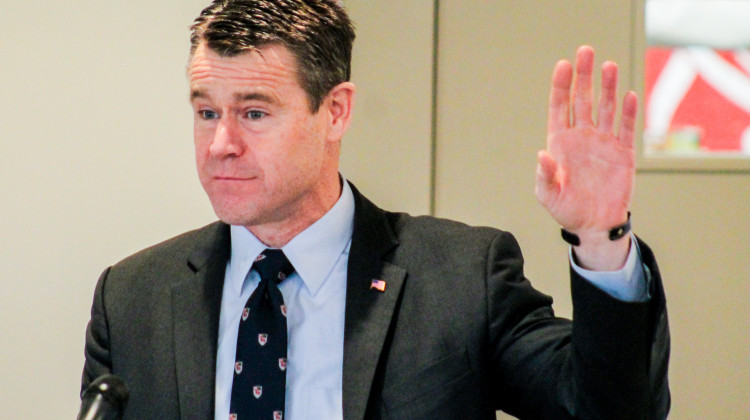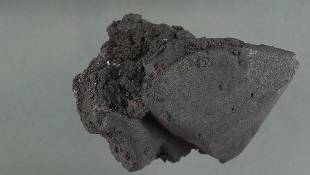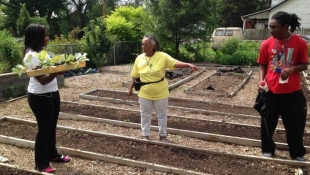INDIANAPOLIS – Heroin use is on the rise – not just in Hollywood or New York, where living fast and dying young can seem a world away – but in less sophisticated cities, towns and suburbs across Indiana and the rest of the nation.
Heroin use among those 12 years and older jumped by nearly 80 percent from 2007 through 2012, according to a recent study by the federal Substance Abuse and Mental Health Services Administration. More than 669,000 people used the drug in 2012.
And Indiana is not immune from the heroin epidemic.
Indianapolis is known as the hub for Mexican drug cartels, due to the city’s multiple intersecting interstates and major thoroughfares, according to Drug Free Marion County. Also, the state’s college students reported in a 2013 study that they had used heroin within the past year at three times the national rate – although the numbers are still fairly small.
Heroin is everywhere, said Carly Gillette of Indianapolis. It doesn’t matter where you are, it is easy to get. “It is one of the biggest epidemics right now.”
Gillette should know.
She first used drugs at age 12 and continued from there. “I had never been addicted to drugs and I thought I was invincible,” Gillette said.
That was before she tried heroin for the first time when she was in her early 20s. Nothing was ever the same.
Best the first time
Heroin is an opioid drug that takes control over the brain. It is processed from morphine and comes from certain types of poppy seed plants. When heroin reaches the brain, it becomes morphine and attaches to opioid receptors, then sending out dopamine, thus leading users to feel a “rush” federal officials say.
This rush of good feelings brings a user to a “euphoric” state.
Gillette says the feeling is best the first time.
“The first time basically felt amazing. I was addicted from there. And nothing compared to shooting up,” she said. “It was the best painkiller and euphoric feeling I had ever felt. And everyone chases that first high. You are half-asleep-half-awake.”
And that half-asleep-half-awake feeling is real. Users are drowsy for hours after getting high, and get that nodding feeling as if they are falling asleep. Along with other side effects, the part of the brain that controls respiratory functions is impaired, which causes slowed breathing.
The opioid family
Along with heroin, Indiana is seeing a rise in the abuse of prescription medication. Many painkillers are also part of the opioid family. One of the biggest culprits that led to an increase in heroin use was Oxycontin.
The drug was a powerful painkiller that gave users a high if they rubbed off the coating, which released the drug immediately instead of over 24 hours. Then users burned it down and smoked it. One 80 mg pill could be bought for $100. But with all the abuse, the Federal Drug Administration called for an end to the production of Oxycontin in 2013.
This is what led 25-year-old Jake Schmutte of Sheridan to heroin.
“If they still make Oxys that’s what I would be doing,” Schmutte said.
Schmutte, like many users, found that heroin was cheaper – about $10 for one tenth of a gram – and a quick high that replaced the Oxycontin.
But he soon found himself shooting up the heroin. “I didn’t want to waste it. I wanted the best and cheapest way to get high,” Schmutte said.
Indiana State Police Captain Dave Bursten agrees that the increase of heroin use is rooted in prescription medicine abuse.
“We are seeing a spike in heroin because of more control of the prescription drugs and it is harder for people to pill shop,” Bursten said. “So that costs them more, and they go to something that costs less but gives the same effect.”
$300+ per day
Gillette formed a $300-a-day-habit, which bought her three grams of dope. Schumtte would spend anything he had.
“If I had three, four, five hundred dollars I would spend it all on dope,” Schumtte said. “I would get a paycheck and spend my whole check, so that would get me through most of the week. But over the course of my addiction you could say I lost everything I had. I would pawn it. I had nice things, like watches that my parents gave me growing up, but I pawned everything to fund my habit.”
Stealing is a common way addicts fund their addiction.
“I was tired of people stealing from me,” Gillette said. “If people weren’t stealing money from me, they were my stealing dope.”
Schmutte said he was thankful he never had to steal, but he did lie to help fund his habit.
“If I ever really needed money I could always lie and get my mom to give me some money,” Schmutte said. “I took advantage of her pretty bad while I was in active addiction. I would lie about anything and everything to get just a couple bucks so I could go get high again.”
The risk is high
Heroin addicts walk a thin line with their lives. Every time they inject heroin, there is a chance of an overdose. That’s in part due to impurities that are mixed in with heroin that users aren’t aware of before they buy drugs.
Some opioids come with high risk of overdosing. According to the Center for Disease Control, 38,329 people died from drug overdose in 2010. Opioids caused 75 percent of those.
Schmutte said that’s a bigger concern with heroin than prescription pills.
“Sometimes you get shitty dope. With the Oxys I knew what I was getting every time,” Schmutte said.
But, the impurities and quality of heroin is not what addicts are concerned about.
“It’s something you really don’t think about at the time,” Schmutte said. “I mean you wake up in the morning and you’re sick and you get a bag of dope. I mean the last thing you are thinking is ‘Oh man, this dope might have something in it. I better not do this.’ That’s the last thing you are thinking. You’re thinking ‘Oh my god, I got a bag of dope, I can finally feel better. I can finally relax.’ Being dope sick is no fun.”
Heroin withdrawal symptoms can start only a few hours after getting high, which drives many addicts to spend more on heroin. What was a cheap high quickly takes over a user’s life and becomes an expensive habit.
Overdoses or near misses become part of a user’s normal life. The Center for Disease Control estimates that for every heroin overdose, there is 25-50 near misses. A near miss is when a user’s breathing has become so slow and shallow that he could die, but doesn’t. An overdose is when breathing has stopped and a user cannot breathe on his own.
But like the impurities in heroin, overdosing is rarely a major concern for addicts.
“At first I never thought about overdosing,” Gillette said. “But the first couple of times I saw it happen, it was the scariest thing I had ever seen. One of the gentlemen I was hanging around was having seizures on a regular basis. He had them on the floor right in front of us. Another girl that regularly came to trap house, she turned black and blue and cold. Her lips turned colors. Ambulances were called several times that week.”
A trap house is where drugs can be bought and sometimes where people go to do drugs. The fear of getting caught would put addicts’ lives in danger, because no one wanted to call emergency personnel for help.
“We had to shake people awake. We would smack their faces and pour water on their face so they would wake up,” Gillette said. “Anything we could do to avoid police and ambulances because we were at the trap house. That’s where the heroin was being sold and where we would shoot up.”
Relapsing is another cause of overdosing, because a user has gone without the drug and lost his tolerance. But he will use again with the same amount.
“There are certain times when you are more vulnerable to overdose. For example, I would go to rehab and detox for 10 days. And as soon as I would get out and go use,” Schmutte said.
Once an addict, always an addict
The road to getting clean can be a long one. Gillette is in rehab for her third time trying to get clean. She relapsed and used crack cocaine before going into treatment for a third time. Schmutte has been to rehab four times.
But going in and out of rehab and trying to get clean is better than the other options for addicts.
“When you think about it, there aren’t that many old drug addicts. There are young addicts and there are dead drug addicts, and there are addicts that have recovered and quit using.” Bursten said.
And Jim Tolgaroglou, a coach at Progress House, a recovery home in Indianapolis, said the heroin addicts “tend to struggle or don’t have as long a sobriety period.”
“They tend to go back to their drug of choice easier,” said Tolgaroglou, who used heroin for five years before getting clean.
Gillette and Schmutte wanted to get clean because they were tired of the lifestyle.
“I was sick and tired of sick and tired. I had wounds all over my body from using and I was shooting up three grams a day. I knew I should have been dead and I was lucky to be alive,” said Gillette. “I knew I couldn’t go on living that way or else I was going to die and I was going to die fast.”
“You talk about getting clean when you are high, and when you are clean you talk about being high,” Schmutte said. “It’s a vicious cycle.”
He considers addiction a problem that can happen to anyone. “It doesn’t care what color skin you are, how much money you make, where you come from or anything like that. If it’s got you, it’s got you.”
“I just want people to know that help is out there,” Gillette said. “But the only way it is going to work is if you want help for yourself. If you don’t I can guarantee 110 percent that it is not going to work.
Schmutte knows that he will be recovering for the rest of his life. “I’ll be an addict until the day I die. I couldn’t tell you what I am going to do today or what I am going to do tomorrow. It’s hour by hour for someone early in recovery. That’s how I am now.”
Allie Nash is a reporter for TheStatehouseFile.com, a news website powered by Franklin College journalism students.
 DONATE
DONATE






 View More Articles
View More Articles





 Support WFYI. We can't do it without you.
Support WFYI. We can't do it without you.